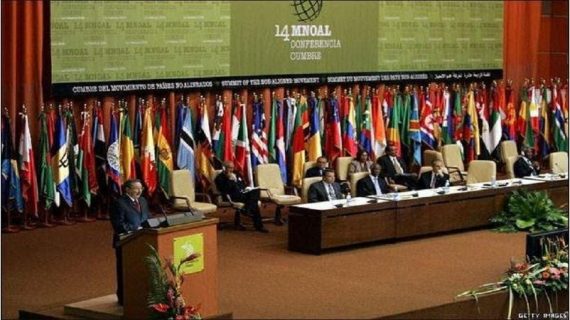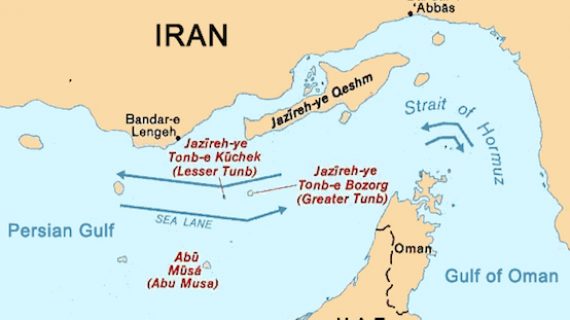US Sanctions May Foster Alternative Trade Routes
The combination of American trade sanctions on Iran and European nations seeking to disregard those sanctions places higher emphasis on improving navigation between the Caspian Sea and the Black Sea
The alternative maritime route crosses the Caspian Sea into a series of navigation locks to the town of Volgograd and to the Sea of Azov into the Black Sea, Danube River and Mediterranean Sea. The Danube River connects to several European economies
Reported by HPMM Group according to FINANCIAL TRIBUNE ; While American President Donald Trump has withdrawn from the Iran nuclear agreement and imposed economic sanctions on the country, several European and Asian nations have announced that they will disregard the sanctions.
Several ship transport companies that also sail to American ports have chosen to suspend transportation services to and from Iranian ports. However, other modes of transportation will likely flourish despite the sanctions, reads an article published by The Maritime Executive. The full text follows:
> Regional Transportation Routes
While American trade sanctions increase the likelihood of navy vessels intercepting container ships and tanker ships suspected of serving Iran, inside the Persian Gulf, other alternative methods of transporting some forms of bulk freight and container freight are either available or in the process of being developed.
China’s plan to build a trade-based Silk Road across Asia includes pipelines to carry oil and natural gas from Iran. Government officials from outside the region may not be able to monitor the volume of oil and natural gas that will flow via Silk Road pipelines.
Discussions began several decades ago about connecting an international gauge railroad between Istanbul and Asia. At present, such a railroad connects Tehran with Beijing and container trains have traveled on that line. There is need to build a stretch of railroad around Lake Van in Turkey to avoid vessels having to carry short sections of train across that lake.
A direct railroad connection between Istanbul and Tehran would greatly improve priority container transportation between China and Europe. Railroad construction in Turkey is independent of American sanctions.
> Alternative Maritime Route
The alternative maritime route crosses the Caspian Sea into a series of navigation locks to the town of Volgograd and another series of navigation locks to the Sea of Azov into the Black Sea, Danube River and Mediterranean Sea.
The Danube River connects to several European economies and has historically carried much trade, and at present, tugs push and navigate trains of coupled barges along several sections of that river.
Several navigable Russian rivers flow into the Black Sea and provide cost-effective maritime passage between several Russian and European cities.
The combination of American trade sanctions on Iran and European nations seeking to disregard those sanctions places higher emphasis on improving navigation between the Caspian Sea and the Black Sea.
A lowland area lies between the Caspian Sea and Sea of Azov where a future direct navigation canal may be possible and built in the same manner as the Suez Canal. Such a navigation canal would also benefit the economies of Turkmenistan, Kazakhstan and even Azerbaijan and Uzbekistan.
It is unlikely that any navy would intercept trading vessels sailing across the Black Sea.
> Trading Energy
Not only does Iran export oil and natural gas, electricity transmission lines connect Iran’s borders to Turkey and Turkmenistan.
Its central location allows Iran to export peak hour electric power into both East Asia and Western Europe. When East Asia’s evening peak demand for electric power ends, Europe’s demand for morning peak electric power begins, allowing Iranian nuclear power stations to continually operate at peak output and export electricity.
A dam built alongside the Strait of Hormuz could operate both pumped hydraulic energy storage and tidal power generation.
An oil pipeline from China could extend across northern Iran into northern Iraq and into the oil regions located near Mosul and Kirkuk, leading to more amicable political relations.
Waste energy from Iranian thermal power stations located on the Caspian Sea could sustain the operation of updraft waterspouts that push massive volumes of water skyward.
January winds would push the additional humidity westward toward the mountains that are the watershed regions of the Tigris and Euphrates rivers. Several regions across Turkey, Syria and Iraq would benefit from additional water flowing in these rivers.
> Rising Seas
Proponents of global warming have suggested that warming oceans and melting Arctic ice would raise international sea levels.
Around the Persian Gulf, Sharjah, Dubai, Abu Dhabi, Qatar, Bahrain, Kuwait and the east coast Saudi Arabian province of Dammam could experience future coastal flooding.
A future dam built across the Strait of Hormuz would maintain a difference in water elevation between the Persian Gulf and Sea of Oman.
The channel north of Qeshm Island on the north side of the strait offers potential to construct navigation locks and a navigation channel for supersize ships.
> Conclusions
While American economic sanctions against Iran would reduce commercial shipping transport to and from Iranian ports located inside the Persian Gulf, ongoing European and Asian economic support for Iran offers the potential to improve existing alternative international trade links and develop new links.
Trains carrying containers will continue to travel between Europe and China, including through Iran.
The construction of pipelines to carry oil and natural gas from Iran into Asia will continue while improved maritime connections between the Caspian Sea and the Black Sea is possible.







